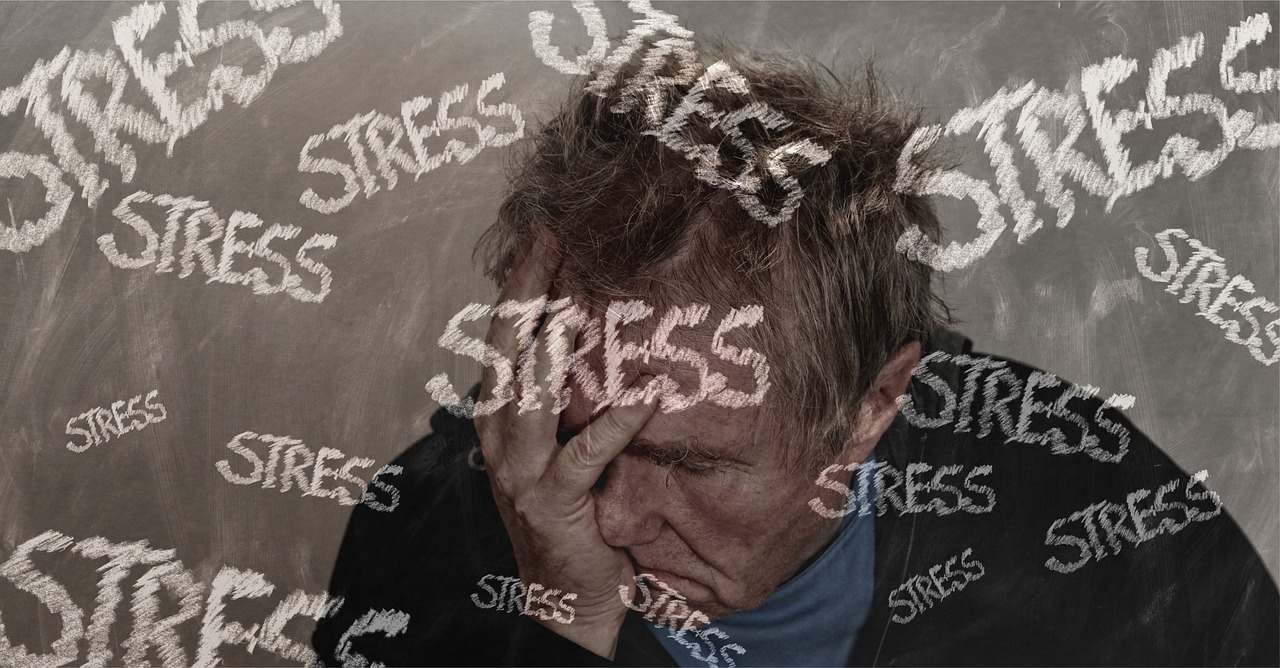Handling Stress with Resilience - Techniques You Need to Know
Stress is a part of life that we all encounter, whether it’s due to work, relationships, or unexpected challenges. However, how we handle that stress can make all the difference. This article explores effective strategies for managing stress through resilience-building techniques. By cultivating a resilient mindset, you can develop practical skills that empower you to navigate life's challenges with confidence and strength. Imagine resilience as your personal superhero cape, ready to shield you from the storms of stress!
To tackle stress effectively, we first need to understand what it is and how it interacts with resilience. Stress can be defined as a response to external pressures, while resilience is the ability to bounce back from those pressures. Think of stress as a wave crashing down on a beach, and resilience as the sand that absorbs and reshapes itself after the wave recedes. Understanding these concepts is crucial for developing effective coping strategies and fostering a resilient approach to life's pressures.
A resilient mindset can significantly impact how we respond to stress. It’s like having a mental toolkit filled with strategies to tackle whatever life throws your way. Cultivating resilience not only helps you manage stress but also enhances your overall mental well-being and life satisfaction. When you view challenges as opportunities for growth rather than insurmountable obstacles, you open the door to a more fulfilling life.
Recognizing the sources of stress is the first step towards resilience. It’s like shining a flashlight on the dark corners of your mind to reveal what’s lurking there. By understanding your personal stress triggers, you can better manage their effects on your mental health and daily life. For example, consider the following common stress triggers:
- Work-related pressures
- Personal relationships
- Financial concerns
By identifying these triggers, you can develop targeted resilience strategies tailored to your unique situation.
Many people face similar stressors, such as deadlines at work, conflicts in personal relationships, and financial strains. Understanding these common stressors can help you recognize patterns in your own life, making it easier to devise a plan to counteract their effects. For instance, if work-related stress is a significant trigger for you, consider implementing time management techniques or discussing workload concerns with your supervisor.
Conducting a personal stress assessment is an essential step in identifying unique triggers and responses. This tailored approach enables more effective resilience-building practices. You might want to keep a journal for a week, noting when you feel stressed and what situations preceded those feelings. This will help you pinpoint specific stressors and develop strategies to address them.
Now that you understand your stress triggers, it’s time to build resilience skills that can enhance your ability to cope effectively. Skills such as mindfulness, problem-solving, and positive thinking are like weights you can lift to strengthen your mental muscles. These practices empower you to face stress head-on, rather than letting it overwhelm you.
Mindfulness practices are powerful tools for reducing stress and fostering resilience. By focusing on the present moment, you can cultivate a sense of calm and clarity that helps you navigate life’s ups and downs. Techniques such as meditation, deep breathing, and body scans can be incredibly beneficial for your mental health and emotional balance.
Specific mindfulness techniques can help you cultivate a resilient mindset in the face of stress. Here are a few to consider:
- Meditation: Spend a few minutes each day in quiet reflection.
- Deep Breathing: Practice taking deep, slow breaths to calm your nervous system.
- Body Scans: Focus on different parts of your body to release tension.
These practices promote relaxation and can significantly reduce stress levels.
Incorporating mindfulness into your daily routine doesn’t have to be complicated. Simple adjustments, such as taking a few moments to breathe deeply before a meeting or practicing gratitude at the end of the day, can lead to significant improvements in stress management and overall resilience. It’s about finding what works for you and making it a regular part of your life.
A strong support system is vital for resilience. Social connections can buffer against stress and enhance your ability to cope with challenges. Think of your support system as a safety net that catches you when you stumble. Building a network of supportive relationships can significantly improve your resilience.
Identifying and nurturing relationships that provide emotional support is crucial. Look around you—who are the people that lift you up when you're feeling down? These strong connections can help you navigate stress more effectively and provide a sense of belonging and security.
Sometimes, professional guidance is necessary. If you find yourself overwhelmed and struggling to manage stress, don’t hesitate to seek help from mental health professionals. They can provide valuable tools and strategies to help you build resilience and cope with stress in a healthy way.
Now that we've explored the importance of resilience, let's dive into some practical techniques for managing stress effectively. From time management to physical activity, these strategies contribute to resilience and overall well-being.
Effective time management can significantly reduce stress levels. By prioritizing tasks and creating a balanced schedule, you can foster resilience and ensure that you’re not overwhelmed by deadlines. Consider using tools like calendars or to-do lists to keep track of your responsibilities.
Regular physical activity plays a crucial role in managing stress. Exercise releases endorphins, which are natural mood lifters. Whether it’s a brisk walk, a yoga session, or a dance class, find an activity you enjoy and make it a regular part of your routine. Your body and mind will thank you!
Sustaining resilience requires ongoing effort and practice. It’s not a one-and-done deal; it’s more like tending to a garden. Regularly reflecting on your stress management strategies and adjusting as needed is key to maintaining resilience. Adaptability is essential in the face of life’s challenges.
Developing healthy habits is essential for long-term resilience. Nutrition, sleep, and self-care play significant roles in your overall well-being. Make sure you’re fueling your body with nutritious foods, getting enough sleep, and taking time for yourself to recharge. These habits create a solid foundation for resilience.
Lastly, regularly reflecting on your stress management strategies and adjusting as needed is crucial. Life is always changing, and what works for you now might not work later. Keep an open mind and be willing to adapt your approach as necessary.
1. What is resilience?
Resilience is the ability to bounce back from stress and adversity. It involves adapting well in the face of challenges and maintaining a positive outlook.
2. How can I identify my stress triggers?
You can identify stress triggers by keeping a journal to note when you feel stressed and what situations precede those feelings. This will help you pinpoint specific stressors.
3. What are some mindfulness techniques I can try?
Consider trying meditation, deep breathing exercises, or body scans to promote relaxation and reduce stress.
4. When should I seek professional help for stress?
If you find yourself overwhelmed and struggling to cope, it may be time to seek help from a mental health professional who can provide guidance and support.

Understanding Stress and Resilience
Stress is an inevitable part of life. It can arise from various sources, such as work pressures, personal relationships, or unexpected life changes. When we encounter stress, our bodies respond with a complex mix of physical and emotional reactions. This response can be both beneficial and detrimental, depending on how we manage it. On one hand, stress can motivate us to meet deadlines or tackle challenges; on the other, it can lead to feelings of overwhelm and anxiety. Understanding the nature of stress is crucial because it sets the stage for developing resilience.
Resilience, in contrast, refers to our ability to bounce back from adversity and maintain our mental well-being in the face of challenges. It’s like a rubber band; the more you stretch it, the more it can return to its original shape. Resilience is not about avoiding stress but rather about learning how to deal with it effectively. By cultivating resilience, we can transform the way we respond to stress, turning potential setbacks into opportunities for growth.
The relationship between stress and resilience is intertwined. When we experience stress, our resilience is tested. However, building resilience can also help us manage stress more effectively. Here’s how:
- Stress Awareness: Recognizing stressors is the first step in developing resilience. By understanding what triggers stress in our lives, we can prepare ourselves to face these challenges head-on.
- Adaptive Responses: Resilience allows us to respond to stress in healthier ways. Instead of resorting to unhealthy coping mechanisms, resilient individuals are more likely to seek support or engage in problem-solving.
- Emotional Regulation: Building resilience enhances our ability to manage emotions. This means we can experience stress without becoming overwhelmed, allowing us to think clearly and make better decisions.
In essence, understanding stress and resilience is about recognizing that while we cannot always control the stressors in our lives, we can control how we respond to them. By fostering a resilient mindset, we equip ourselves with the tools to navigate life’s challenges with confidence and strength. This understanding lays the foundation for effective coping strategies that can lead to a more fulfilling and balanced life.

The Importance of a Resilient Mindset
In today's fast-paced world, stress can feel like an unwelcome companion, lurking around every corner. But what if I told you that the key to tackling stress lies not just in the challenges we face, but in how we respond to them? This is where a resilient mindset comes into play. A resilient mindset is like a mental fortress; it equips you to withstand life's storms and emerge stronger on the other side.
Imagine resilience as a rubber band. When stretched, it can take on a lot of pressure without breaking. Similarly, individuals with a resilient mindset can adapt and bounce back from setbacks, maintaining their mental well-being even in the face of adversity. This adaptability is crucial because it allows us to navigate through life's ups and downs with a sense of confidence and optimism.
So, why is cultivating a resilient mindset so important? Here are a few compelling reasons:
- Enhanced Coping Skills: A resilient mindset fosters effective coping strategies. When stress hits, resilient individuals are more likely to approach the situation with a problem-solving attitude rather than succumbing to panic.
- Improved Mental Health: Resilience is closely linked to better mental health outcomes. Those who cultivate resilience often experience lower levels of anxiety and depression, allowing them to enjoy life more fully.
- Greater Life Satisfaction: Resilient individuals tend to have a more positive outlook on life. They are more likely to appreciate the little things and find joy even in challenging circumstances.
Moreover, a resilient mindset can significantly impact your relationships. When you approach life’s challenges with resilience, you are better equipped to support others, fostering a sense of community and connection. Think of resilience as a ripple effect; when you become more resilient, those around you often feel empowered to do the same.
In essence, cultivating a resilient mindset isn't just about surviving stress; it's about thriving despite it. By embracing resilience, you can turn challenges into opportunities for growth, learning, and self-discovery. So, how do you start nurturing this valuable trait? It begins with awareness—recognizing your thoughts, feelings, and reactions to stress. From there, you can begin to implement strategies that foster resilience, such as mindfulness practices, building supportive relationships, and developing healthy coping mechanisms.
Ultimately, the importance of a resilient mindset cannot be overstated. It is the bedrock upon which effective stress management is built. As you embark on your journey toward resilience, remember that it's not about avoiding stress altogether, but rather, learning how to navigate it with grace and strength.

Identifying Stress Triggers
Recognizing the sources of stress is the first step towards resilience. When we talk about stress triggers, we refer to the specific situations, events, or even thoughts that cause our stress levels to rise. Imagine stress triggers as the little firecrackers that can ignite a larger explosion of anxiety or overwhelm if left unchecked. By identifying these triggers, you can take proactive steps to manage your responses and cultivate a more resilient mindset.
To effectively identify your personal stress triggers, consider keeping a stress diary. This can be a simple notebook or an app on your phone where you jot down moments when you feel stressed. Note the circumstances surrounding these feelings, including:
- The time of day
- What you were doing
- Who you were with
- Your emotional state at that time
Over time, patterns may emerge that can help you pinpoint specific triggers. For example, you might notice that work deadlines consistently elevate your stress levels, or perhaps family gatherings bring about feelings of anxiety. Understanding these patterns is crucial for developing targeted resilience strategies.
Additionally, it’s essential to recognize that stress triggers can vary widely from person to person. What stresses one individual might not affect another at all. This is why a personalized approach is vital. Take the time to reflect on your life and identify those unique stressors that impact you. Ask yourself questions like:
- What situations make me feel overwhelmed?
- Are there certain people or environments that trigger my stress?
- How do my thoughts and beliefs contribute to my stress levels?
By answering these questions, you can gain deeper insights into your stress triggers and begin to formulate a plan for addressing them. Remember, the goal is not to eliminate stress entirely—after all, some stress can be motivating—but rather to manage it effectively. The more you understand your triggers, the better equipped you will be to handle them with resilience.
In conclusion, identifying your stress triggers is a critical step in the journey toward resilience. By taking the time to observe and analyze what causes you stress, you can begin to take control of your reactions and responses, ultimately leading to a healthier, more balanced life.
- What are common stress triggers? Common stress triggers include work-related pressures, personal relationships, financial concerns, and major life changes.
- How can I keep track of my stress triggers? Keeping a stress diary where you note down stressful events and your reactions can help you identify patterns in your triggers.
- Is it normal to have stress triggers? Yes, everyone has stress triggers; recognizing them is a key step in managing stress effectively.
- Can stress triggers change over time? Absolutely! As life circumstances change, so can your stress triggers. Regular reflection can help you stay aware of these changes.

Common Stress Triggers
Stress can often feel like an invisible weight we carry around, and understanding its common triggers is crucial for anyone looking to build resilience. Many of us encounter stressors in our daily lives that can leave us feeling overwhelmed and anxious. These stress triggers can vary widely from person to person, but there are some that tend to be universal in their impact.
One of the most prevalent sources of stress is work-related pressure. In today's fast-paced environment, deadlines, workload, and workplace dynamics can create a significant amount of tension. Whether it's the fear of not meeting expectations or the challenge of navigating office politics, work can be a breeding ground for stress. Additionally, the rise of remote work has introduced new stressors, such as the blurring of work-life boundaries and feelings of isolation.
Another common trigger is personal relationships. Interpersonal conflicts, whether with family, friends, or significant others, can lead to emotional turmoil. The strain of misunderstandings, differing expectations, or lack of communication can manifest as stress. It's essential to recognize that even positive relationships can sometimes become stressful, especially during significant life changes, such as marriage, parenthood, or relocation.
Financial concerns also rank high on the list of stressors. Worries about job security, debt, or the inability to meet financial obligations can create a persistent state of anxiety. The pressure to maintain a certain lifestyle or to save for future goals can exacerbate these feelings, leading to a cycle of stress that feels inescapable.
To better understand these stress triggers, we can categorize them into three main areas:
| Category | Common Triggers |
|---|---|
| Work | Deadlines, workload, office dynamics |
| Relationships | Conflicts, communication issues, life changes |
| Financial | Job security, debt, lifestyle pressure |
Recognizing these triggers is the first step toward managing stress effectively. By identifying the specific sources of stress in your life, you can begin to develop targeted strategies for resilience. It’s like shining a light in a dark room; once you see what’s causing the shadows, you can address them head-on. Remember, acknowledging your stressors is not a sign of weakness but rather a crucial step in taking control of your mental well-being.

Personalizing Your Stress Assessment
Understanding your unique stress triggers is a crucial step in building resilience. Just like a tailor customizes a suit to fit your body perfectly, personalizing your stress assessment helps you identify what specifically causes you stress. This tailored approach allows you to develop effective strategies that resonate with your individual experiences. So, how do you go about personalizing your stress assessment? Let's break it down.
First, start by reflecting on your daily routine and jotting down moments when you feel overwhelmed or anxious. Keep a stress journal for at least a week, noting the situations that trigger stress, your emotional responses, and any physical symptoms you might experience. This practice not only raises awareness but also provides a clearer picture of your stress landscape. You might be surprised to find patterns in your stress responses!
Next, consider categorizing your stressors. You can group them into different areas such as:
- Work-related stress: Deadlines, workload, and team dynamics.
- Personal relationships: Conflicts with friends or family, or feelings of isolation.
- Financial concerns: Budgeting, unexpected expenses, or job security.
- Health issues: Chronic conditions, injuries, or mental health challenges.
By identifying these categories, you can better understand which areas of your life require more attention and resilience-building strategies. For instance, if work-related stress is a significant trigger, you might explore time management techniques or communication strategies with colleagues.
Additionally, don't shy away from seeking feedback from trusted friends or family members. Sometimes, those close to you can offer insights into your stress triggers that you may not recognize yourself. They can help you see the bigger picture and provide support as you navigate through your stress assessment.
Once you've identified your stress triggers, it's time to evaluate how you typically respond to them. Do you tend to withdraw, lash out, or perhaps overthink? Understanding your reactions is essential for developing healthier coping mechanisms. You might consider creating a table to compare your stress triggers with your responses:
| Stress Trigger | Typical Response | Alternative Coping Strategy |
|---|---|---|
| Work deadlines | Overwhelmed, procrastination | Break tasks into smaller steps |
| Family conflict | Withdrawal, silence | Open conversation, active listening |
| Financial worries | Anxiety, avoidance | Create a budget, seek advice |
In this table, you can see the connection between your stress triggers and your reactions, along with potential alternative strategies to adopt. This process not only empowers you to take control of your stress but also encourages a proactive approach to resilience.
Finally, remember that personalizing your stress assessment is not a one-time task; it’s an ongoing journey. As your life evolves, so will your stressors. Regularly revisiting and updating your assessment will ensure that you remain equipped to handle life's challenges with grace and strength. By doing so, you’re not just surviving; you’re thriving.
Q: How often should I conduct a personal stress assessment?
A: It's beneficial to conduct a personal stress assessment at least once a month or whenever you feel significant changes in your life. Regular check-ins help you stay aware of your stressors and adjust your coping strategies accordingly.
Q: What if I can't identify my stress triggers?
A: If you’re having trouble pinpointing your stressors, consider seeking help from a mental health professional. They can provide guidance and tools to help you gain insights into your stressors.
Q: Can I use apps to help with my stress assessment?
A: Absolutely! There are numerous apps designed for tracking mood and stress levels. They can help you log daily emotions and identify patterns over time.

Building Resilience Skills
Building resilience is like strengthening a muscle; it requires consistent effort and practice. Resilience skills can equip you with the tools needed to navigate life's ups and downs with grace and confidence. So, how do we go about building these essential skills? Well, it starts with a few foundational techniques that can be integrated into your daily life.
One of the most effective ways to enhance resilience is through mindfulness practices. Mindfulness isn't just a buzzword; it's a powerful technique that encourages you to stay present and engaged in the moment. By practicing mindfulness, you can learn to manage your emotions better, reduce anxiety, and cultivate a sense of calm amidst chaos. Techniques such as meditation, deep breathing exercises, and even mindful walking can significantly contribute to your resilience toolkit. For instance, dedicating just a few minutes each day to meditation can help clear your mind and enhance your emotional regulation.
Another vital skill in building resilience is problem-solving. Life will invariably throw challenges your way, and having strong problem-solving skills can make a world of difference. When faced with a stressful situation, ask yourself: What is the problem? What are my options? What are the potential outcomes? By breaking down the problem into manageable parts, you can approach it with a clearer mindset. This method not only helps in resolving the issue at hand but also boosts your confidence in handling future challenges.
Let’s not forget the importance of emotional awareness. Understanding your emotions is crucial in building resilience. When you recognize your feelings, you can respond to them more effectively rather than react impulsively. Keeping a journal can be a fantastic way to track your emotions and identify patterns. Over time, you’ll become more adept at recognizing triggers and managing your reactions, which is a vital part of resilience.
Additionally, social skills play a pivotal role in resilience building. It's essential to cultivate strong relationships that can provide support during tough times. Engaging in open conversations, actively listening, and showing empathy can strengthen your connections with others. Remember, resilience is not just about standing strong alone; it’s also about knowing when to lean on others. Having a reliable support network can buffer against stress and enhance your ability to bounce back.
Lastly, integrating a sense of purpose and goals into your life can significantly bolster your resilience. When you have clear goals, you’re more likely to stay motivated and focused, even when faced with adversity. Setting small, achievable goals can create a sense of accomplishment and encourage a positive mindset. Think of it as building stepping stones that lead you through the challenging waters of life. Each small success adds up, reinforcing your resilience.
In summary, building resilience skills is an ongoing journey that involves mindfulness, problem-solving, emotional awareness, social skills, and a sense of purpose. By incorporating these strategies into your daily routine, you can develop a robust resilience framework that empowers you to handle stress more effectively. Remember, resilience isn’t about avoiding stress; it’s about learning how to thrive despite it.

Mindfulness and Stress Reduction
In today's fast-paced world, stress can feel like an unwelcome companion, constantly lurking around the corner. However, incorporating mindfulness into your daily routine can be a game-changer. Mindfulness is the practice of being fully present and engaged in the moment, which can help us detach from the chaos swirling around us. By focusing on the here and now, we can significantly reduce our stress levels and cultivate a sense of peace amidst the noise.
So, how does mindfulness work its magic on stress? When we practice mindfulness, we activate our body's relaxation response, which counteracts the stress response. This shift helps lower blood pressure, reduces anxiety, and promotes a sense of calm. Imagine your mind as a busy highway during rush hour; mindfulness is like the traffic light that helps regulate the flow, allowing you to navigate through your thoughts and emotions more smoothly.
There are various mindfulness techniques that can be easily integrated into your daily life. Here are a few powerful practices:
- Meditation: Taking just a few minutes each day to meditate can create a profound shift in your mental state. Find a quiet spot, close your eyes, and focus on your breath. If your mind wanders, gently bring your focus back to your breathing.
- Deep Breathing: This technique involves taking slow, deep breaths to calm your nervous system. Inhale deeply through your nose, hold for a moment, and exhale slowly through your mouth. Repeat this several times to feel the tension melt away.
- Body Scans: This practice encourages you to pay attention to different parts of your body, noticing any tension or discomfort. Starting from your toes and moving up to your head, consciously relax each area as you go.
Integrating these practices into your daily life doesn't have to be complicated. You can begin with just a few minutes each day and gradually increase the time as you become more comfortable. The key is consistency; like any skill, the more you practice mindfulness, the more adept you will become at managing stress.
Moreover, mindfulness can help you develop a deeper understanding of your stressors. By observing your thoughts and feelings without judgment, you can identify patterns and triggers that contribute to your stress. This self-awareness is crucial for building resilience, as it empowers you to respond to challenges with clarity and calmness rather than reacting impulsively.
In conclusion, mindfulness is a powerful ally in the battle against stress. By embracing mindfulness techniques and making them a regular part of your life, you can foster a more resilient mindset, enhance your emotional well-being, and navigate life's challenges with greater ease. Remember, just like a muscle, your mindfulness practice will grow stronger with time and dedication.
1. What is mindfulness?
Mindfulness is the practice of being fully present and aware of the current moment without judgment. It involves focusing on your thoughts, feelings, and sensations to cultivate a sense of calm and clarity.
2. How can mindfulness reduce stress?
Mindfulness helps activate the body's relaxation response, reducing anxiety and promoting a sense of calm. By focusing on the present, it allows individuals to detach from stressors and respond more thoughtfully.
3. Do I need to meditate for long periods to see benefits?
No, even short sessions of mindfulness practice can yield significant benefits. Start with just a few minutes each day and gradually increase the duration as you become more comfortable.
4. Can mindfulness be practiced anywhere?
Absolutely! Mindfulness can be practiced anywhere—whether you're at home, at work, or on the go. It only requires your attention and intention.
5. How do I stay consistent with mindfulness practice?
To stay consistent, try setting aside a specific time each day for mindfulness. You can also use reminders or apps to help you stay on track. The key is to make it a regular part of your routine.

Mindfulness Techniques
When it comes to managing stress, are like a soothing balm for the chaotic mind. These practices help you stay grounded in the present moment, allowing you to observe your thoughts and feelings without judgment. Imagine standing on the edge of a bustling city, where the noise and rush are overwhelming. Now, picture yourself stepping back, taking a deep breath, and noticing the beauty around you. That’s what mindfulness does—it creates a space between you and your stressors.
One of the most popular mindfulness techniques is meditation. This practice involves sitting quietly, focusing on your breath, and gently bringing your mind back whenever it wanders. It’s like training a puppy; at first, it may feel chaotic, but with patience and consistency, you’ll find that your mind becomes more obedient and calm. Even just a few minutes each day can work wonders for your mental clarity and emotional balance.
Another effective technique is deep breathing. This method is incredibly simple yet profoundly impactful. When you feel stress creeping in, pause and take a deep breath in through your nose, allowing your abdomen to expand fully. Hold that breath for a moment, then exhale slowly through your mouth. This process activates your body's relaxation response, helping to lower your heart rate and reduce feelings of anxiety. You can even practice this while sitting at your desk or during a busy day—no one needs to know!
Additionally, consider incorporating body scans into your routine. This technique involves mentally scanning your body for tension, starting from your toes and moving up to your head. As you focus on each part, consciously relax the muscles. It’s like giving yourself a mini vacation, allowing you to release built-up stress and tension. You might be surprised by how much you carry in your body without even realizing it!
Incorporating these mindfulness techniques into your daily life doesn’t have to be complicated. You can start small, perhaps by dedicating just five minutes in the morning to meditate or practice deep breathing. As you become more comfortable, you can gradually expand your practice. Remember, the key is consistency. Just like watering a plant, the more you nurture your mindfulness practice, the more resilient you’ll become in the face of stress.
Ultimately, mindfulness is about cultivating a resilient mindset. By using these techniques, you’re not just managing stress; you’re training your brain to respond to challenges with clarity and calmness. So, why not take a moment right now to breathe deeply and center yourself? You’ll be amazed at the difference it can make!
Q1: How long should I practice mindfulness each day?
A1: Even a few minutes can be beneficial. Start with 5-10 minutes daily and gradually increase as you become more comfortable.
Q2: Can mindfulness help with anxiety?
A2: Yes! Mindfulness techniques can significantly reduce anxiety by helping you focus on the present moment rather than worrying about the past or future.
Q3: Do I need to sit in silence to practice mindfulness?
A3: Not necessarily. Mindfulness can be practiced in various ways, including while walking, eating, or even during routine tasks. The key is to stay present and aware.
Q4: What if my mind keeps wandering during meditation?
A4: It’s completely normal for your mind to wander. When you notice this happening, gently bring your focus back to your breath or whatever you are concentrating on.

Integrating Mindfulness into Daily Life
Integrating mindfulness into your daily life can feel like a daunting task, but it doesn't have to be! Think of mindfulness as a gentle, yet powerful tool that can transform your everyday experiences. It's all about being present and fully engaged in the moment, no matter what you're doing. Imagine sipping your morning coffee, not just gulping it down in a rush, but actually savoring the aroma and flavor. This simple act can set a positive tone for your day.
To effectively weave mindfulness into your routine, start by identifying moments throughout your day where you can pause and reflect. You might be surprised to find that these opportunities are more abundant than you think. Here are a few suggestions:
- Morning Rituals: Begin your day with a few minutes of mindful breathing or meditation. This can help center your thoughts and prepare you for the day ahead.
- Mindful Eating: During meals, focus on the taste, texture, and aroma of your food. This not only enhances your eating experience but can also promote healthier eating habits.
- Mindful Walking: Whether it's a stroll during your lunch break or a walk in the park, pay attention to the sensations of your feet touching the ground and the sights around you.
Moreover, consider setting reminders throughout your day to check in with yourself. This could be a simple sticky note on your desk or a notification on your phone. When the reminder pops up, take a moment to breathe deeply and acknowledge how you're feeling. Are you stressed? Happy? Anxious? Recognizing your emotions is a key part of mindfulness.
Another effective method for integrating mindfulness is to practice gratitude. At the end of each day, take a moment to reflect on what you are thankful for. This could be anything from a supportive friend to a beautiful sunset. Writing these thoughts in a journal can enhance the experience, making it a wonderful ritual to wind down your day.
Lastly, don't forget to be patient with yourself. Mindfulness is a skill that takes time to develop. Just like learning to ride a bike, you might wobble at first, but with practice, you’ll find your balance. Embrace the journey and enjoy the small moments of mindfulness that can lead to a more fulfilled and resilient life.
Q1: How long should I practice mindfulness each day?
A1: Even a few minutes can be beneficial. Start with 5-10 minutes and gradually increase as you become more comfortable.
Q2: Can mindfulness help with anxiety?
A2: Yes! Mindfulness can help reduce anxiety by promoting relaxation and a greater awareness of the present moment.
Q3: What if my mind wanders during mindfulness practice?
A3: It's completely normal for your mind to wander. When it happens, gently bring your focus back to your breath or the present moment without judgment.
Q4: Do I need to meditate to be mindful?
A4: No, mindfulness can be practiced in various ways, including during daily activities like eating or walking. Meditation is just one of the many methods.

Developing a Support System
In today's fast-paced world, the importance of a strong support system cannot be overstated. Having a network of supportive individuals can act as a safety net, cushioning the blows of stress and adversity. Think of your support system as a sturdy umbrella that shields you from the rain of life's challenges. It’s not just about having people around you; it’s about nurturing relationships that provide emotional support, understanding, and encouragement when you need it the most.
Building a robust support system involves identifying those relationships that uplift and inspire you. These connections can come from various areas of your life, including family, friends, colleagues, or even community groups. The key is to surround yourself with individuals who genuinely care about your well-being and are willing to listen without judgment. When you share your struggles with someone who understands, it can lighten your emotional load and provide fresh perspectives on your challenges.
Moreover, it's essential to actively nurture these relationships. Just like a garden, your support system needs attention and care to flourish. Make time to connect with your support network regularly, whether through phone calls, meet-ups, or simply sending a text to check in. This consistent communication fosters deeper connections and ensures that your support system remains strong and reliable.
Additionally, don’t hesitate to seek professional help when necessary. Sometimes, talking to a mental health professional can provide insights and coping strategies that friends and family may not be equipped to offer. Professionals can guide you through your stressors with expertise and confidentiality, making them an invaluable part of your support system.
In summary, developing a support system is a proactive step toward resilience. By identifying supportive relationships, nurturing them, and seeking professional guidance when needed, you can create a powerful network that not only helps you manage stress but also enhances your overall quality of life. Remember, it's okay to lean on others; we’re all in this together!
- What are the signs of a healthy support system? A healthy support system is characterized by open communication, mutual respect, and the ability to provide emotional and practical help when needed.
- How can I find support if I feel isolated? Consider joining community groups, clubs, or online forums related to your interests. These can be great ways to meet new people and build connections.
- Is it okay to seek professional help? Absolutely! Seeking help from a mental health professional is a sign of strength and can provide you with valuable tools to manage stress and build resilience.

Identifying Supportive Relationships
When it comes to building resilience, one of the most crucial factors is the presence of supportive relationships in our lives. These connections can act as a safety net during tough times, providing emotional support, practical assistance, and a sense of belonging. But how do we identify these supportive relationships? It’s not just about having a large circle of friends; it's about the quality of those connections. Think of it as curating a personal support team that lifts you up rather than drags you down.
Start by reflecting on your current relationships. Who do you turn to when you're feeling overwhelmed? Who listens without judgment and offers constructive advice? These individuals are your potential support pillars. It’s important to recognize that supportive relationships can come in various forms, including family members, friends, colleagues, or even mentors. Each relationship may contribute differently, but they all share the common thread of providing encouragement and understanding.
To help you identify these relationships, consider asking yourself the following questions:
- Who makes me feel valued and appreciated?
- Who do I feel comfortable sharing my thoughts and feelings with?
- Who has been there for me during challenging times?
- Who encourages me to pursue my goals and dreams?
Once you've pinpointed these relationships, it's essential to nurture them. Just like a garden, supportive relationships require care and attention to flourish. Make an effort to reach out regularly, share your experiences, and show appreciation for their support. This reciprocal exchange strengthens bonds and fosters a resilient network.
Additionally, don't hesitate to expand your circle. Engaging in community activities, joining clubs, or participating in social events can introduce you to new people who may become valuable sources of support. Remember, resilience is not just about enduring challenges; it's about having a robust network that can help you navigate through them.
In summary, identifying supportive relationships is a vital step in building resilience. By recognizing who lifts you up and actively nurturing those connections, you create a solid foundation that can help you face life’s challenges with confidence. Surround yourself with positivity, and you’ll find that the journey through stress becomes a lot more manageable.
- What are the signs of a supportive relationship? Look for qualities such as trust, empathy, and the ability to communicate openly. A supportive relationship should make you feel safe and valued.
- How can I strengthen my existing supportive relationships? Regular communication, expressing gratitude, and being there for others during their tough times can significantly enhance your relationships.
- What if I don’t have any supportive relationships? Consider joining clubs, support groups, or community activities to meet new people who share your interests and values.

Seeking Professional Help
Sometimes, navigating the turbulent waters of stress can feel overwhelming, and that’s perfectly okay. Recognizing when to seek professional help is a crucial step in building resilience. It’s like knowing when to call in the lifeguard while swimming in rough seas. Mental health professionals, such as therapists and counselors, are equipped with the tools and knowledge to help you manage stress effectively and develop coping strategies tailored to your unique situation.
When should you consider reaching out for help? Here are some signs that it might be time to consult a professional:
- You feel persistently overwhelmed by stress or anxiety.
- Your daily life is significantly impacted—whether it’s work, relationships, or personal well-being.
- You’re experiencing physical symptoms of stress, such as headaches, fatigue, or sleep disturbances.
- You've tried self-help strategies but haven’t seen improvement.
It's essential to understand that seeking help is not a sign of weakness; rather, it’s a bold step toward self-care and resilience. Just as we wouldn’t hesitate to see a doctor for a physical ailment, reaching out for mental health support is equally important. Professional guidance can provide you with a safe space to explore your feelings, gain insights, and learn practical skills to manage stress.
Moreover, therapy can be a transformative experience. Different therapeutic approaches, such as cognitive-behavioral therapy (CBT) or mindfulness-based stress reduction (MBSR), can offer you valuable techniques to reshape your thoughts and reactions to stressors. By working with a professional, you can delve deeper into understanding your stress triggers and develop a personalized resilience plan.
In conclusion, if you find yourself grappling with stress that feels unmanageable, don’t hesitate to reach out for professional help. It’s a proactive step towards reclaiming your well-being and fortifying your resilience against life’s challenges.
Here are some common questions regarding seeking professional help for stress management:
- How do I find a qualified therapist? Start by asking for recommendations from friends or family, or search online directories that list licensed professionals in your area.
- What should I expect in my first session? The first session usually involves discussing your background, current challenges, and what you hope to achieve through therapy.
- How many sessions will I need? The number of sessions varies depending on individual needs, but many people find significant improvement within a few months.
- Is therapy confidential? Yes, therapy sessions are confidential, and professionals are bound by ethical guidelines to protect your privacy.

Practical Stress Management Techniques
When it comes to managing stress, having a toolkit of practical techniques can make all the difference. Stress is a natural part of life, but how we respond to it can determine our overall well-being. By implementing effective stress management strategies, we can not only alleviate immediate stress but also build resilience for the future. So, what are some of these techniques that can help us navigate life's pressures with grace and confidence?
First and foremost, time management is a crucial skill in reducing stress. Think of your day as a puzzle; each task is a piece that needs to fit into the bigger picture of your life. By prioritizing tasks and creating a balanced schedule, you can prevent the overwhelming feeling of having too much on your plate. Consider using tools like planners or digital calendars to keep track of deadlines and appointments. This way, you can allocate your time effectively, ensuring that important tasks are completed without the last-minute rush that often leads to stress.
Another powerful technique is physical activity. Engaging in regular exercise is like giving your body a natural stress-relief pill. Whether it's a brisk walk, a yoga session, or a high-intensity workout, physical activity releases endorphins—those feel-good hormones that can elevate your mood and reduce anxiety. Not only does exercise improve your physical health, but it also enhances your mental resilience. Aim for at least 30 minutes of moderate exercise most days of the week; it doesn't have to be a marathon to be effective!
Incorporating mindfulness practices into your daily routine can also significantly lower stress levels. Mindfulness is all about being present in the moment and acknowledging your thoughts and feelings without judgment. Techniques such as meditation, deep breathing exercises, and body scans can help ground you and reduce feelings of overwhelm. For instance, try setting aside just five minutes a day to focus on your breath. Inhale deeply, hold for a moment, and exhale slowly. This simple practice can create a sense of calm amidst the chaos.
Additionally, maintaining a healthy lifestyle is vital for long-term stress management. Nutrition, sleep, and self-care all play crucial roles in how we handle stress. Eating a balanced diet rich in fruits, vegetables, whole grains, and lean proteins fuels your body and mind, providing the energy needed to tackle challenges. Don't underestimate the power of a good night's sleep; it’s essential for mental clarity and emotional stability. Aim for 7-9 hours of quality sleep each night to recharge your body and mind.
Lastly, don't forget about the importance of social support. Building a network of friends, family, or colleagues can provide a safety net during stressful times. Having someone to talk to, share experiences with, or even just vent can lighten your emotional load. Remember, you don’t have to go through stress alone; reach out and nurture those connections. They can be a lifeline when stress feels overwhelming.
In summary, practical stress management techniques are not just about quick fixes; they are about cultivating a lifestyle that promotes resilience. By focusing on time management, physical activity, mindfulness, healthy living, and social support, you can create a robust framework to handle stress effectively. So, why not take the first step today? Start small, choose one technique that resonates with you, and watch how it transforms your approach to stress!
- What are some quick stress relief techniques?
Techniques such as deep breathing, taking a short walk, or practicing mindfulness can provide immediate relief. - How often should I exercise to manage stress?
Aim for at least 30 minutes of moderate exercise most days of the week to reap the benefits of stress reduction. - Can mindfulness really help with stress?
Yes! Mindfulness practices can help you become more aware of your thoughts and feelings, leading to better stress management. - What role does sleep play in stress management?
Quality sleep is essential for mental clarity and emotional stability, making it a crucial component of stress management.

Time Management Strategies
When it comes to managing stress, one of the most powerful tools at your disposal is effective time management. Think of time management as your personal toolbox; within it lies an array of strategies that can help you tackle your daily tasks and commitments with ease, reducing the overwhelming feelings that often accompany a busy schedule. By mastering these strategies, you can create a more structured environment that not only enhances productivity but also fosters a sense of control over your life.
First off, it's essential to understand that not all tasks carry the same weight in terms of urgency and importance. This is where the Priority Matrix comes into play. Imagine a simple four-quadrant grid where you categorize your tasks based on their urgency and importance. By doing so, you can clearly see which tasks require immediate attention and which can be scheduled for later. Here’s a quick breakdown:
| Urgent | Not Urgent | |
|---|---|---|
| Important | 1. Do these tasks now | 2. Schedule these tasks |
| Not Important | 3. Delegate these tasks | 4. Eliminate these tasks |
Another key strategy is to set specific goals for each day. By defining what you want to accomplish, you create a roadmap that guides your actions and decisions. Start each day by jotting down your top three priorities. This way, you can focus your energy on what truly matters, rather than getting lost in a sea of less significant tasks. Remember, it's not about doing more; it's about doing what counts.
Furthermore, consider the concept of time blocking. This technique involves dedicating specific chunks of time to particular tasks or activities. For example, you might block out two hours in the morning for deep work, followed by a one-hour lunch break, and then another block for meetings or collaborative tasks. By compartmentalizing your time, you minimize distractions and enhance your focus, making it easier to tackle stressors as they arise.
Lastly, don't underestimate the power of regular breaks. Your brain is not a machine; it needs downtime to recharge. Incorporate short breaks into your schedule to clear your mind and refresh your energy. This can be as simple as a five-minute walk or a few deep breaths. These small pauses can significantly improve your overall productivity and resilience in the face of stress.
By implementing these time management strategies, you can transform your approach to daily challenges. Remember, it’s about finding what works best for you and being flexible enough to adjust as needed. With practice, you’ll not only manage your time more effectively but also build a resilient mindset that can withstand the pressures of life.
- What is the Priority Matrix? The Priority Matrix is a tool that helps you categorize tasks based on their urgency and importance, allowing you to prioritize effectively.
- How can I stay motivated to stick to my time management strategies? Setting clear, achievable goals and regularly reviewing your progress can help maintain motivation.
- What are some quick ways to take breaks during a busy day? You can take a short walk, practice deep breathing, or do a quick stretch to recharge.

Physical Activity and Resilience
Engaging in regular physical activity is not just about maintaining a healthy body; it's a powerful tool for enhancing resilience and managing stress effectively. When we think about resilience, we often picture someone who can bounce back from adversity, and physical activity plays a vital role in this process. It’s like a secret weapon that helps fortify our mental defenses against the daily pressures of life. Imagine your body as a well-tuned machine; the more you fuel it with movement, the better it performs under stress.
Moreover, when you exercise, your body releases endorphins, often referred to as the “feel-good hormones.” These natural mood lifters can create a sense of euphoria and reduce feelings of anxiety and depression. Have you ever noticed how a brisk walk or a good workout can instantly lift your spirits? This is because physical activity stimulates the production of these endorphins, creating a powerful feedback loop that encourages you to stay active and resilient.
But it’s not just about the immediate effects. Regular physical activity contributes to long-term resilience by improving your overall mental health. Studies have shown that those who engage in consistent exercise report lower levels of stress and better coping mechanisms when faced with challenges. Here are some key benefits of physical activity in building resilience:
- Improved Mood: Regular exercise can lead to a more positive outlook on life, making it easier to handle stress.
- Enhanced Sleep Quality: Physical activity promotes better sleep, which is crucial for mental recovery and resilience.
- Increased Energy Levels: More energy means you can tackle challenges head-on without feeling overwhelmed.
- Social Connections: Joining a sports team or a fitness class can help you build a supportive community.
Incorporating physical activity into your routine doesn’t have to be a chore. It can be as simple as taking a walk in your neighborhood, dancing to your favorite tunes, or trying out a new sport. The key is to find activities that you enjoy, making it more likely that you’ll stick with them. Think of it this way: just like you wouldn’t skip maintaining your car, don’t skip maintaining your body. It’s all about creating a sustainable routine that fosters both physical and mental resilience.
Additionally, if you’re looking to maximize the benefits of physical activity, consider incorporating a variety of exercises into your routine. This can include:
| Type of Exercise | Benefits |
|---|---|
| Cardiovascular (e.g., running, cycling) | Boosts heart health and releases endorphins |
| Strength Training (e.g., weight lifting) | Improves confidence and builds physical strength |
| Flexibility (e.g., yoga) | Enhances relaxation and reduces tension |
In conclusion, making physical activity a regular part of your life is one of the best investments you can make in your resilience. It’s not just about building muscles or losing weight; it’s about creating a robust mental framework that allows you to navigate life’s challenges with grace and strength. So, lace up your sneakers and get moving! Your mind and body will thank you for it.
- How often should I exercise to build resilience?
Aim for at least 150 minutes of moderate aerobic activity each week, along with strength training on two or more days. - Can any type of physical activity help with stress?
Yes! Any activity that gets your heart rate up can help reduce stress, whether it's dancing, hiking, or playing sports. - What if I don’t have time for a long workout?
Short bursts of activity, like a 10-minute walk or a quick workout, can still be effective in managing stress and building resilience. - Do I need to join a gym to be active?
Not at all! You can stay active in many ways, including home workouts, outdoor activities, or simply walking.

Maintaining Long-Term Resilience
Maintaining long-term resilience is not just a one-time effort; it’s an ongoing journey that requires commitment and adaptability. Just like tending to a garden, where you must regularly water, prune, and nurture the plants to ensure they thrive, your mental resilience needs continuous care and attention. So how do we cultivate this resilience over time? It involves creating healthy habits, engaging in regular reflection, and being willing to adjust our strategies as life evolves.
One of the cornerstones of long-term resilience is establishing healthy habits. Think of these habits as the roots of a sturdy tree; the deeper and more robust they are, the better the tree can withstand storms. Nutrition plays a vital role here. Eating a balanced diet rich in fruits, vegetables, lean proteins, and whole grains can significantly impact your mental health. Sleep is another crucial element. Just as a phone needs to be charged to function, your brain needs adequate rest to operate at its best. Aim for 7-9 hours of quality sleep each night. Lastly, don’t underestimate the power of self-care. Taking time to engage in activities that bring you joy and relaxation can recharge your emotional batteries.
Another essential aspect of maintaining resilience is regular reflection and adjustment. Life is dynamic, and what works for you today might not be effective tomorrow. By taking the time to reflect on your stress management strategies, you can identify what is working and what isn’t. Consider keeping a journal where you jot down your thoughts and feelings about your stressors and coping mechanisms. This practice can illuminate patterns and help you adjust your approach. For example, if you notice that a particular technique, like deep breathing, is becoming less effective, it may be time to explore new methods or revisit old ones that you found helpful in the past.
Moreover, it’s essential to embrace the idea of adaptability. Resilience is not about being unshakeable; it’s about being flexible and willing to change your course when needed. Think of it like a river that flows around obstacles rather than trying to force its way through them. When faced with challenges, ask yourself: What can I learn from this situation? This mindset shift can transform obstacles into opportunities for growth.
To summarize, maintaining long-term resilience is about:
- Creating Healthy Habits: Focus on nutrition, sleep, and self-care.
- Regular Reflection: Journal your experiences and adjust your strategies as needed.
- Embracing Adaptability: Be flexible and open to change.
By integrating these practices into your daily routine, you’ll not only enhance your ability to cope with stress but also foster a resilient mindset that can navigate the ups and downs of life with grace and strength. Remember, resilience is a skill that can be developed over time, and with consistent effort, you’ll find yourself better equipped to handle whatever life throws your way.
1. How can I quickly boost my resilience in a stressful situation?
In a moment of stress, try deep breathing exercises or a brief mindfulness meditation. These techniques can help center your thoughts and calm your mind, allowing you to respond more effectively.
2. Is resilience the same as being tough?
No, resilience is about flexibility and adaptability in the face of challenges, whereas toughness often implies a rigid approach. Resilient individuals can bend without breaking.
3. Can anyone become more resilient?
Absolutely! Resilience is a skill that can be learned and developed over time with practice and the right strategies.

Creating Healthy Habits
Creating healthy habits is like planting seeds in a garden; it requires patience, nurturing, and the right conditions for growth. When it comes to building resilience, the habits you cultivate can significantly influence your ability to manage stress effectively. Think about it: just as a well-watered plant thrives, so too does a person who prioritizes their health and well-being. To create a resilient lifestyle, focus on integrating a few key habits into your daily routine.
First and foremost, **nutrition** plays a vital role in your overall health. A balanced diet rich in fruits, vegetables, whole grains, and lean proteins can boost your mood and energy levels. When your body is fueled with the right nutrients, you’re better equipped to handle stress. Consider keeping a food diary to track what you eat and how it affects your mood and energy. This awareness can help you make healthier choices over time, just like a gardener learns which plants flourish in their garden.
Next, let’s talk about **sleep**. Many underestimate the power of a good night’s sleep, but it’s essential for resilience. Quality sleep not only helps your body recover but also enhances cognitive function and emotional regulation. Aim for 7-9 hours of sleep each night, and establish a calming bedtime routine to signal to your body that it’s time to wind down. Think of sleep as the recharge cycle for your phone; without it, you’re bound to run out of battery when you need it the most!
In addition to nutrition and sleep, don’t forget about **self-care**. This can mean different things for different people, but the essence of self-care is to make time for activities that rejuvenate you. Whether it’s reading a book, taking a warm bath, or spending time in nature, these moments of self-care can be your oasis in a stressful world. Remember, self-care isn’t selfish; it’s a necessary practice to maintain your resilience, much like a gardener needs to tend to their own well-being to cultivate a thriving garden.
To illustrate how these habits work together, here’s a simple table summarizing the key components of a healthy lifestyle:
| Healthy Habit | Benefits |
|---|---|
| Nutrition | Boosts mood and energy levels |
| Sleep | Enhances cognitive function and emotional regulation |
| Self-Care | Promotes relaxation and mental well-being |
Ultimately, creating healthy habits is about consistency. Start small; perhaps commit to cooking one healthy meal a week or establishing a bedtime routine. As you begin to see the benefits, you’ll likely feel motivated to incorporate more changes. Remember, resilience is not a destination but a journey. By nurturing these healthy habits, you’re laying down the roots for a resilient life, ready to weather any storm that comes your way.
- What are some easy ways to start creating healthy habits?
Begin by making small changes, like adding more vegetables to your meals or setting a regular sleep schedule. - How long does it take to develop a new habit?
Research suggests it can take anywhere from 21 to 66 days to form a new habit, depending on the complexity of the behavior. - Can I still enjoy treats while creating healthy habits?
Absolutely! Balance is key. Allowing yourself occasional treats can make it easier to stick to healthy habits in the long run.

Regular Reflection and Adjustment
Regular reflection and adjustment are essential components of maintaining resilience in the face of stress. Think of it like tuning a musical instrument; if you don't regularly check and adjust the strings, the music can quickly become discordant. In the same way, our stress management strategies require ongoing evaluation to ensure they are effective and aligned with our current circumstances.
To cultivate this habit, set aside time each week to reflect on your stress levels and the effectiveness of your coping strategies. Ask yourself questions such as:
- What stressors did I encounter this week?
- How did I respond to these stressors?
- Were my coping mechanisms effective?
- What could I do differently next time?
This process of self-inquiry can illuminate patterns in your behavior and stress responses. For instance, you might discover that certain situations consistently trigger stress, or that particular coping strategies work better than others. By identifying these patterns, you can make informed adjustments to your approach, enhancing your resilience over time.
Additionally, consider maintaining a journal to document your reflections. Writing down your thoughts can provide clarity and serve as a valuable resource for identifying trends and changes in your stress management. You might find it helpful to include:
| Date | Stress Triggers | Response | Effectiveness | Adjustments Needed |
|---|---|---|---|---|
| MM/DD/YYYY | Example Trigger | Example Response | Effective/Not Effective | Suggestions for Change |
As you engage in this reflective practice, remain open to change. Life is dynamic, and what worked yesterday might not be effective today. By being adaptable and willing to tweak your strategies, you not only enhance your resilience but also empower yourself to navigate life's challenges with greater ease. Remember, resilience is not a destination but a journey—one that thrives on continuous growth and adjustment.
- What is resilience? Resilience is the ability to bounce back from stress and adversity, adapting positively to challenges.
- How can I build resilience? Building resilience involves practicing mindfulness, developing a support system, and regularly reflecting on your experiences to adjust your strategies.
- Why is regular reflection important? Regular reflection helps you understand your stress triggers and responses, allowing you to make necessary adjustments for better stress management.
- Can I seek professional help for stress management? Yes, seeking professional help can provide you with tailored strategies and support to enhance your resilience.
Frequently Asked Questions
- What is stress and how does it affect us?
Stress is our body's response to challenges or demands, often triggering feelings of anxiety, tension, or overwhelm. It can affect mental health, leading to issues like depression or anxiety disorders, and can also manifest physically through headaches, fatigue, or even digestive problems.
- How can I identify my personal stress triggers?
Identifying your stress triggers involves self-reflection and awareness. Keep a journal to note when you feel stressed and what circumstances surround those feelings. Look for patterns in your daily life, such as specific situations, people, or tasks that consistently elevate your stress levels.
- What are some effective resilience-building techniques?
Effective resilience-building techniques include practicing mindfulness, engaging in regular physical activity, and developing a strong support network. Mindfulness techniques like meditation and deep breathing can help you stay grounded, while exercise boosts your mood and energy levels.
- Why is mindfulness important for stress management?
Mindfulness helps you stay present and focused, reducing anxiety about the past or future. By practicing mindfulness, you can cultivate a greater awareness of your thoughts and emotions, which allows you to respond to stressors more calmly and effectively.
- How can I integrate mindfulness into my daily routine?
Start small by setting aside just a few minutes each day for mindfulness practices. This could be as simple as taking a few deep breaths, enjoying your morning coffee without distractions, or taking a mindful walk. Gradually increase the time as you become more comfortable with the practice.
- What role does a support system play in building resilience?
A strong support system provides emotional comfort and practical assistance during stressful times. Surrounding yourself with supportive friends, family, or community members can help buffer against stress, making it easier to cope with life's challenges.
- When should I seek professional help for stress?
If stress becomes overwhelming and interferes with your daily life, relationships, or mental health, it may be time to seek professional help. Therapists and counselors can provide guidance, coping strategies, and support tailored to your specific needs.
- What are some practical techniques for managing stress?
Practical stress management techniques include time management strategies like prioritizing tasks, setting realistic goals, and scheduling breaks. Additionally, incorporating regular physical activity and relaxation techniques can significantly reduce stress levels.
- How can I maintain resilience over the long term?
Maintaining resilience requires ongoing effort. Focus on creating healthy habits, such as balanced nutrition, regular exercise, and sufficient sleep. Regular reflection on your stress management strategies and being open to adjusting them as needed will also help you sustain your resilience.



















